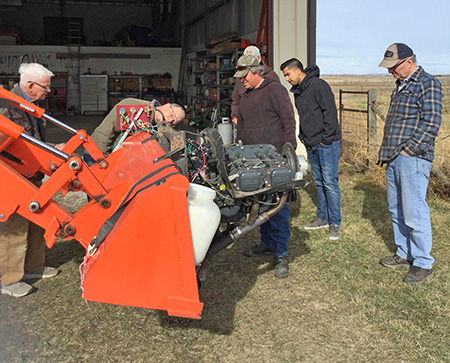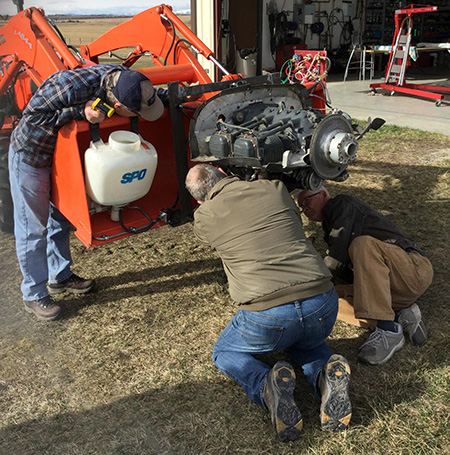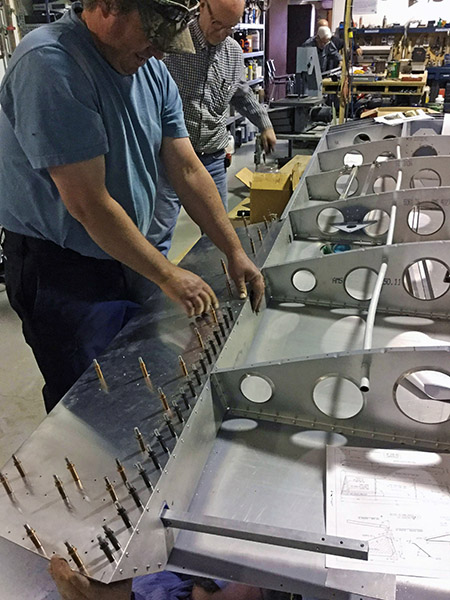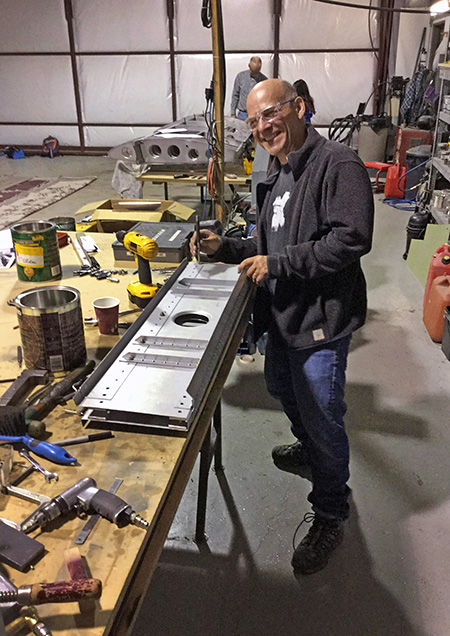EAA Chapter 1410 High River — Learn-Build Project
By Jack Dueck, EAA Lifetime 337912
May 2019 - Early in January our High River chapter took on a learn-build project to introduce new members to EAA and to our chapter, to help them learn the disciplines needed to build an amateur-built aircraft, and then to help these members form a flying club where they could learn to fly or upgrade their flying knowledge with their own aircraft. This is the first of such programs in Canada and is modeled after the program in the United States.
Our group has melded very nicely with members enthusiastically meeting every Saturday to work on our Zenith 601 XL aircraft. Today our group consists of two seasoned builders and five who are enthusiastic about this great opportunity. In addition, several others come out to help and to enjoy the comradeship that this exciting project provides.
We purchased this partially completed aircraft in late December of last year. It came with components from the empennage to the firewall. It also included a Lycoming O-235 engine. The empennage had been completed, the wings started, as well as the rear part of the fuselage started. At that point Zenith came out with an upgrade modification as directed by the FAA, a mod that included substantial work to the spar center section and the wing structure. This mod had been started by the original builder, but at that time his business became successful and engaged all of his time, so the project was put on hold for some 10 years. Since he did not see himself ever completing the build he put it up for sale, and that's when our chapter came into the picture.
Our build group evaluated the airplane and made several key decisions. We decided that the aircraft would be better suited for teaching new pilots with a nosewheel configuration rather than as a taildragger. We also decided that we would look for a used Rotax powerplant that would increase our useful load by about 100 pounds. We are currently in conversation with Zenith to see how we can exchange our current wheel configuration to that of a nosewheel. And we came across a Rotax 912 ULS engine with 1,500 hours since new, in the Bay Area in California. Since I was going to teach a SportAir Workshop in Fremont, California, I arranged to meet with the owner, made the purchase, and then transported it back to High River, Alberta, saving freight costs as well as some GST.
This made our Lycoming available for sale. This engine had not been run for a decade but had been put into storage in a dry configuration. We were all curious to know what shape it was in, and so we decided to put it onto a test bed and run it. We used a front-end loader as our test bed, set up basic instrumentation, supplied fuel and electric power, and then set out to run it.
It took several tries, but then it came to life to the delight of our group. We carefully monitored its vitals: oil pressure, cylinder head temperatures, and exhaust gas temperatures.
You may ask why we'd bother to interrupt our building program to run up this engine, and the answer is because we could, and it was great fun, and that underlies the whole concept of our program. Besides building a flying aircraft, we want to come out of this experience as great friends having a great time.


To date, our work on the project has been focused on upgrading the mod to the wings, the ailerons, and the spar carry-through section. The mod is quite extensive and involves heavy additions to the wing spars, both the front and the rear, mass balance additions to the ailerons, and a heavily beefed-up center section.
Each Saturday we divide our members into two groups, each with a seasoned builder as lead, and take on a particular task to completion. Our progress has been steady, and we are satisfied with our work. It is not predicated on a completion schedule, but we are keeping our hopes up that we will be able to complete the aircraft, fly off the 25-hour initial test period, and then have two of our members fly it to Oshkosh for the EAA AirVenture 2020.

The above picture shows the group working on the right-hand wing. They have temporarily mounted the aileron and are establishing the weight required for the aileron mass balance. Note also how this group has installed a 1/2-inch diameter plastic tube through the ribs that will house the electrical wires to the landing light and the nav/strobe light.
The second group has made good progress in the modification to the center carry-through section. This component is now completed, and this group will now start on the fuselage portion of the construction.
We will be ordering the firewall forward kit in the next few weeks, hoping to be able to pick it up at the factory in Mexico, Missouri, on our trip back from Oshkosh this July. In this manner we will save the freight and a good deal of the GST costs. That will leave us with the seats and upholstery, avionics and instruments, and paint.

It is astonishing to see members of our group, who have never experienced aircraft construction, become knowledgeable and capable in such a short time frame. We are all enthusiastic about our progress. Our focus is on quality construction, and our work shows this to be true.
To date we have each invested $2,000 toward our goal. We are on course to see its completion with each individual of our group of seven come out with an investment of $5,000-$6,000 for a 14 percent ownership of a great two-place amateur-built aircraft. Not bad for a great experience, the formation of a great group of friends, and a worthwhile chapter project. Stay tuned.
Note: The O-235 is for sale, available with or without a C-140 engine mount. You see a video of the engine running here. Contact Jack Dueck at jackpdueck@gmail.com or 403-815-9384 for more information.
